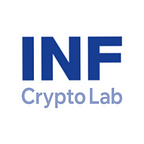GameFi : Games, an Impetus for Leveraging Blockchain (Part #1)
i. Key Points
- Game companies consider Web3 business as a viable breakthrough strategy when under various external threats.
- Blockchain technology brings true ownership and interoperability to the gaming industry.
- With sufficient market size and active investment, the gaming industry could be a catalyst for the mass adoption of blockchain.
- Gaming itself and its user characteristics complement blockchain, which provides traditional gaming companies a reason to utilize blockchain technology.
I. Introduction
Bitcoin, which appeared in 2008, opened peer-to-peer trading of digital assets, and Ethereum, which appeared in 2014, provided scalability to blockchain networks. Many entrepreneurs began to apply innovative ideas such as ICO, DeFi, NFT, P2E, and DAO on top of the decentralized Ethereum network, and more users and developers participated in the blockchain ecosystem. Beyond watching the innovative and growing blockchain ecosystem, leading companies are now starting to apply elements of blockchain to their businesses. Companies are redefining their relationship with customers (consumer → community) through blockchain, adding value to digital assets, transferring a part of the decision-making authority to the community, and expanding their services globally. These businesses are collectively referred to as Web3 businesses.
In Korea, companies in various industries such as game, entertainment, fashion, distribution, and F&B are conducting Web3 business. Apart from companies in the gaming industry, most companies in other industries are not actively using blockchain elements such as mainnets, DeFi, and tokenization to innovate their core value chains due to the lack of domestic regulations and accounting standards. Instead, most companies are only utilizing assisting the core value chain in limited ways, such as targeting millennials and generation Z, many of whom are already embedded in the blockchain ecosystem, by using NFTs or increasing brand loyalty by providing new user experiences to customers.
However, the approach of game companies is different. Game companies are not just limiting themselves by simply utilizing NFTs, but they are preparing to incorporate Web3 as a major business model by building their own ecosystems such as mainnets and metaverses. Examples include WeMade’s WEMIX, Com2uS’ XPLA, Netmarble’s MBX, Neowiz’s Neopin and Intella X, Nexon’s Maple Universe, and Krafton’s Migaloo. Game companies are investing a lot of manpower and capital to develop infrastructure products necessary for the ecosystem, such as DeFi and marketplace, while building their own ecosystem.
In this article, we will be reviewing the strategies which game companies are pursuing in their respective Web3 businesses, and the basis for considering games as a trigger for mass adoption of blockchain in the blockchain industry. In the next article, the XPLA ecosystem promoted by the Com2uS group will be analyzed and discussed as a representative case.
Figure 1. Examples of blockchain-related services and IPs by Korean game companies
Figure 2. Korean game company focus chart
